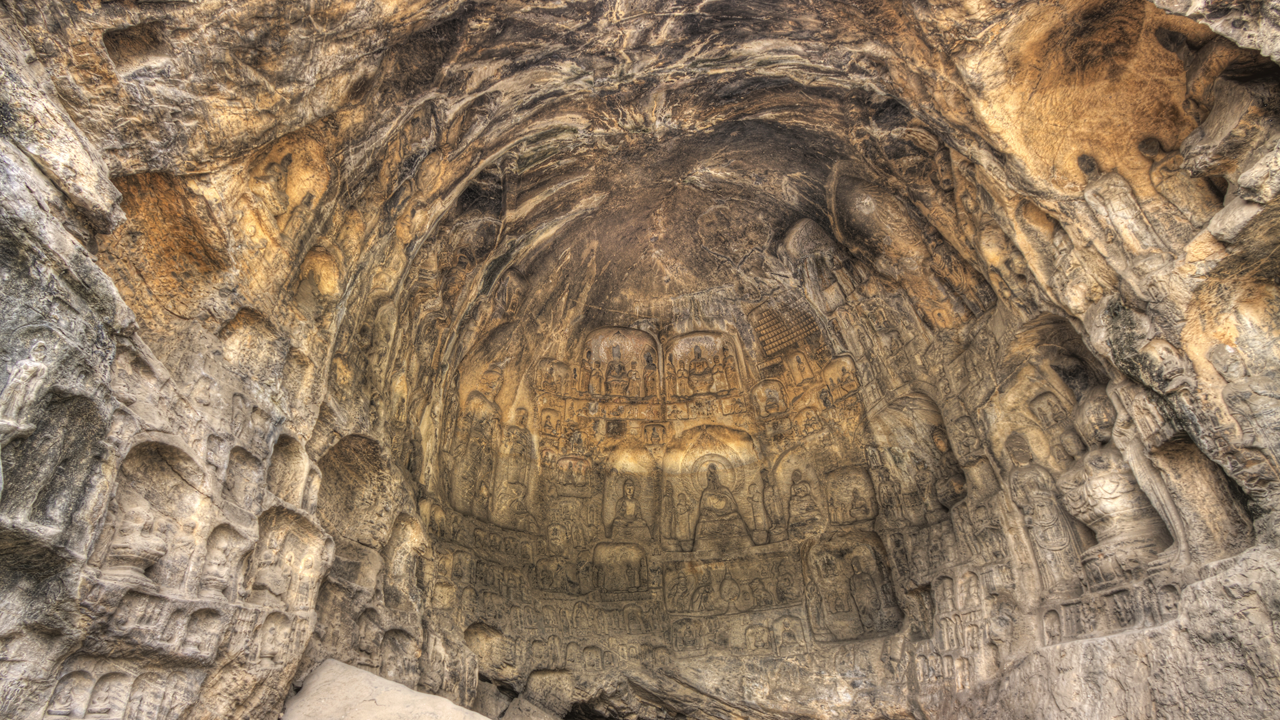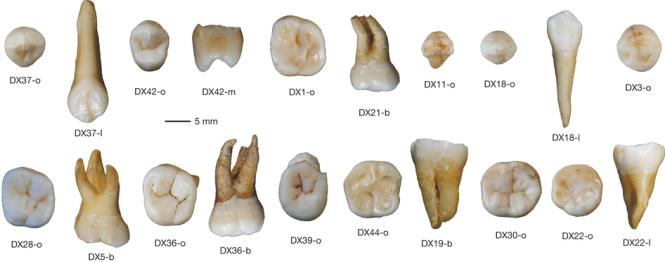
What are unequivocally modern human teeth, 80,000-120,000 years old, doing in a cave in southeastern China?
They’re turning back the clock on modern humans’ exodus from the African cradle by at least 20,000 years, that’s what. They’re also bolstering the idea that some took a southern migration route to Asia.
The 47 fossil teeth turned up in an excavation of Fuyan Cave in China’s Hunan Province. University of Minnesota researcher R. Lawrence Edwards, along with Yan-jun Cai of the Chinese Academy of Sciences and Hai Cheng of Xi’an Jiaotong University, dated the teeth, using methods Edwards and colleagues had developed.
“We wanted to find when modern humans first arrived in China,” says Edwards, a Regents Professor of Earth Sciences in the College of Science and Engineering and member of the National Academy of Sciences. “It was exciting that the date came back that old—that was remarkable. It implies that humans reached China earlier than we expected.”
Also, “… [T]he human fossils recovered at the Fuyan Cave … represent the earliest ‘fully modern’ humans outside Africa, “ writes María Martinón-Torres, a coauthor of the Nature paper where the discovery is detailed and an anthropologist at University College London, in a blog for the Leakey Foundation.
Exodus
The teeth from Fuyan Cave are from the late Pleistocene epoch. Marked by several ice ages, it ended 11,700 years ago. The teeth’s startling antiquity introduces a new angle on early human movements.
“The most widely accepted theory has humans leaving Africa earlier than 100,000 years ago but only getting as far as the Levant [eastern Mediterranean] region,” says U of M associate professor of anthropology Kieran McNulty, who was not involved in the research. “The Levant has a good record of both modern human and Neanderthal remains, and it is thought that during this time the two groups might have interbred. By this same theory, modern humans only dispersed beyond the Levant much later, perhaps 60,000 years ago.”
Human remains from Israel are 80,000 to 100,000 years old, but they retain some primitive features and so are not considered from unequivocally modern humans. Some anthropologists regard their “Out of Africa” move into the Levant a failed migration.

Did They Fall, or Were They Pushed?
The first traces of our modern ancestors appear in Europe relatively recently—about 45,000 years ago. But now the Fuyan Cave teeth raise the question of why modern humans were able to make it all the way across Asia 35,000 to 75,000 years (depending on the actual age of the Fuyan Cave teeth) before arriving in Europe, which was essentially just around the corner.
Before 45,000 years ago, “Neanderthals were already well established and living in Ice Age Europe,” says McNulty. “As the last Ice Age came to culmination, we see Neanderthals becoming marginalized and much of their former range occupied by modern humans advancing into Europe. The causality of these events is not entirely clear, however.”
In other words, when Neanderthals disappeared, the question is, did they fall or were they pushed? Some anthropologists have speculated that modern humans’ superiority led to their demise, but climate change and other factors may have first weakened the Neanderthals and left the door open to Homo sapiens.
Odyssey
McNulty says most anthropologists now think at least two “Out of Africa” events occurred: the spread of the more primitive Homo erectus across Asia and a later dispersal of modern humans. But more realistically, there were probably several such events, and humans may well have migrated out of—and even back into—Africa multiple times.
But once out of Africa, “the routes are dictated by the Himalayas,” McNulty says. “Most people favor a southern route for dispersals to Southeast Asia.”
Well-dated, unequivocally modern human fossils between the Levant and Southeast Asia—which would support a southern route—have been sparse. Now, however, the Fuyan Cave teeth give compelling evidence for it.
Early modern humans dispersing eastward could have crossed the Red Sea from the Horn of Africa into what is now Yemen via the Bab-el-Mandeb straits because water levels were lower for much of the late Pleistocene.
“Baboons, for example, migrated from Ethiopia to Yemen through the Horn,” McNulty notes.
At this point, it isn’t known whether the modern humans who left behind the Fuyan Cave teeth have any living descendants. But those teeth have earned a place in history.
“New finds like this … give us a better window into the multifarious components that contributed to the human evolutionary story,” McNulty says.